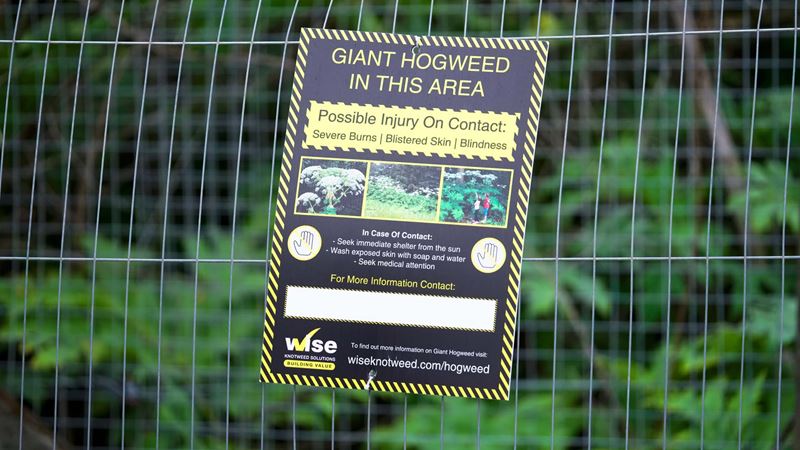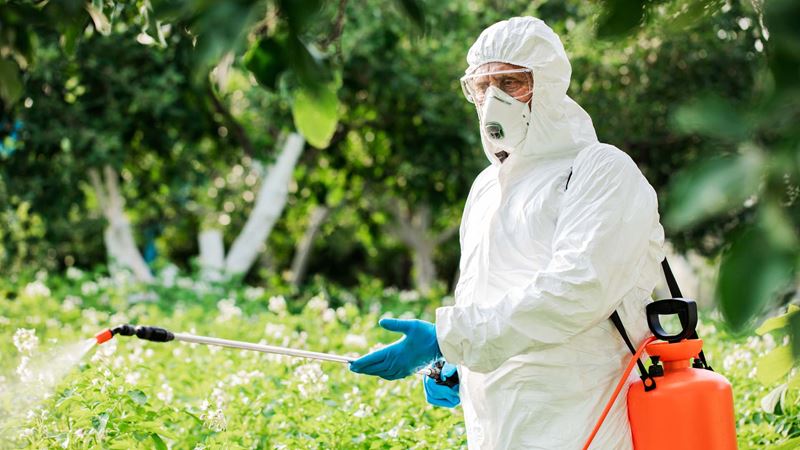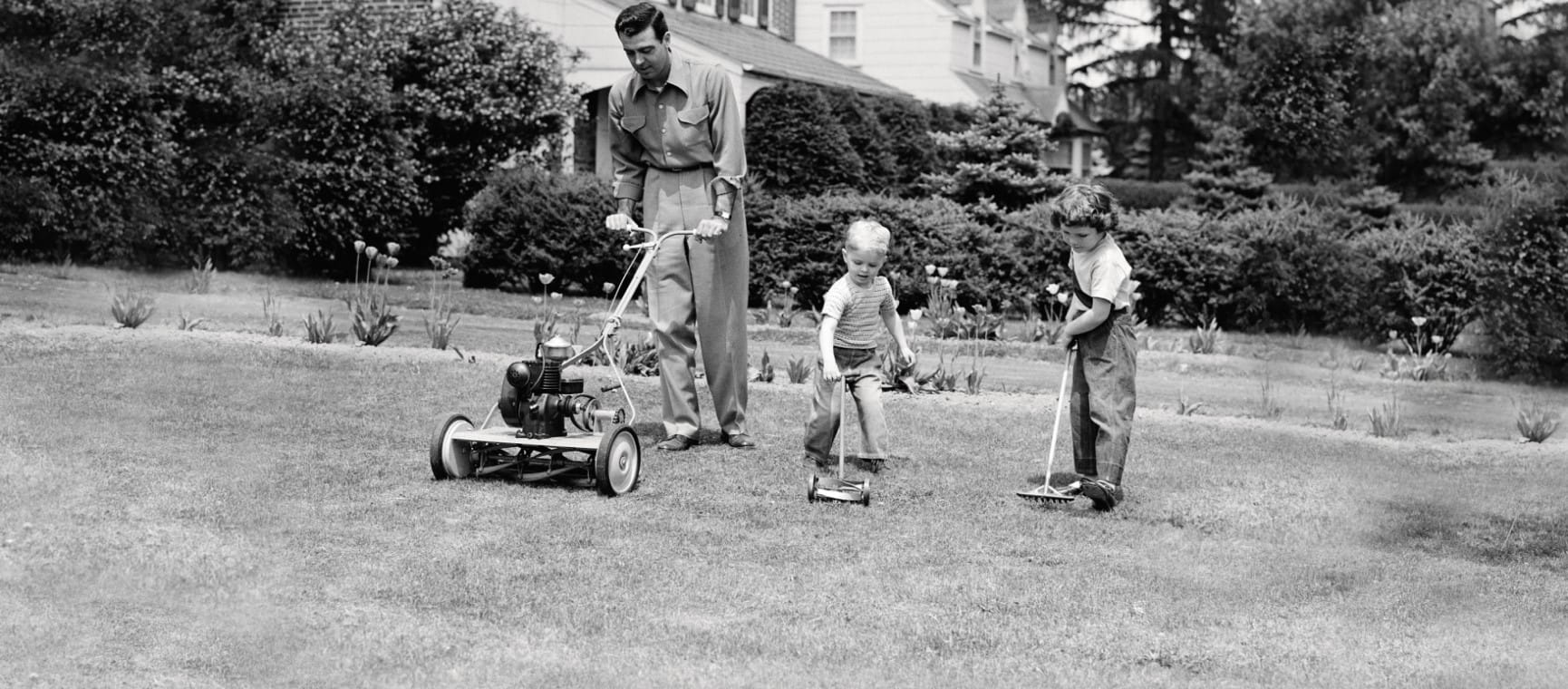It burns, blinds and could be in your garden - the lowdown on giant hogweed
What is giant hogweed and why is it dangerous? Advice on identifying it and removing it safely.

What is giant hogweed and why is it dangerous? Advice on identifying it and removing it safely.

We’re lucky in the UK not to face many severe natural threats simply by stepping into our gardens. Well, depending on how bad your hay fever is...
But that doesn’t mean we’re completely free of pesky plants that could do some damage. Take giant hogweed – a plant that usually appears in the lineup of usual suspects of ‘dangerous’ greenery we should remain vigilant about. This towering “invasive alien” (as the UK Government affectionately calls it), has made headlines for several reasons.
As reported by the BBC, one man’s encounter with giant hogweed left him with permanent scarring in 2023, and in Scotland sheep have been drafted in as a heroic task force to graze – and ultimately control – infestations of this plant, helping in a way that humans seemingly cannot.
So, what is giant hogweed? Would you know how to spot it growing on your patch, and how worried should you really be about the plant that’s often dubbed ‘the UK’s most dangerous’?
If giant hogweed is a dangerously toxic, non-native plant, how is it only now causing an issue in the UK?
According to Nic Seal, founder and managing director of invasive plant specialist Environet, giant hogweed hails from East Asia.
“Like Japanese knotweed, it was imported to the UK as an ornamental plant during the Victorian times and planted in formal gardens and country estates,” he explains.
“It has since spread rapidly around the country, with particular hotspots in north London, Greater Manchester and the east coast of Scotland.”
In terms of biology, giant hogweed is part of the Apiaceae family, which includes carrots, parsley and parsnips, according to Fiona Jenkins of trades matching site Myjobquote.co.uk, though this specimen is “substantially bigger” than its relatives.
“Giant hogweed can behave like a biennial or perennial, either dying back after flowering in its second year or coming back annually,” she notes.
“Fully grown giant hogweed can reach between 1.5-5m (4ft 9in to 16ft 4in) in height and can spread to a width of 1-2m (3ft 2in to 6ft 5in).”
Flowering usually takes place in the second or third year, she adds.
Seal says that the plant’s large, umbrella-shaped flower heads can each produce up to 50,000 seeds a year. All they need is a little help from wildlife, humans, wind or water to spread their misery around the UK.
It loves to be near water

You may be wondering how such an imposing plant could end up growing near your home. If you live near a riverbank or waterway, you might be closer to giant hogweed than you think.
“Giant hogweed thrives particularly well along riverbanks and waterways, where the soil is moist and its seeds can easily spread, avoiding seedling competition,” says Seal.
“New plants mature in around three years and grow several metres in height, forming dense ground cover and outcompeting native flora to colonise new locations. It’s also often spotted along road verges and railway embankments.”
Jenkins adds that you might spot the plant taking over disused ground, and in gardens and allotments close to infected heathland and woodland.
It looks like oversized cow parsley

Giant hogweed is often mistaken for its cow parsley relative, though it’s much larger. But as giant hogweed is highly toxic, it’s useful to know the difference between the two.
“Both cow parsley and giant hogweed have very similar flowers, which form in umbrella-like clusters,” says Chris Bonnett, founder of online retailer Gardening Express.
“One small difference is that the flowers on cow parsley tend to be smaller than the ones on hogweed."
Seal notes another giant hogweed lookalike: poison hemlock, which has similar clusters of white flowers and purple-spotted stems.
Fortunately, you've no need to go near either plant, as poison hemlock can be fatally toxic to animals - including humans - particularly if ingested.

“One of the biggest differences, and the best way to tell cow parsley and giant hogweed apart, is by their stems.
"The stems of cow parsley are slim and green, whereas the stem on a hogweed plant is much thicker and will have dark red/purple blotches, with coarse white hair sticking out.”
Seal explains that as giant hogweed is a perennial plant, it dies back in winter and reemerges the following spring.
Don't touch it.

If you hadn’t already guessed, giant hogweed is incredibly dangerous. In fact, Seal says it’s “probably the most dangerous plant in the UK”.
There’s good reason for his severity. Coming into contact with giant hogweed can have serious long-lasting effects on your skin, and can go on to limit how you spend your time (particularly if you’re a sun lover).
“It contains furocoumarin, a chemical that reverses the skin’s ability to block out UV rays, causes shocking burns and blisters that may recur for several years and that leave permanent scarring,” Seal explains. “If the sap gets into the eyes, it can cause blindness.”
Safe to say, if you’ve realised you have giant hogweed growing on your property, keep yourself, your pets and any visitors well away from it.
Though it is possible to remove the plant from your patch yourself, it’s best to call on professional help.
There are different ways to tackle to plant

Removing giant hogweed from your property isn’t a simple task. Jenkins notes that though you’re not obliged to remove the plant, or inform anyone of its presence, most people choose to get rid of it due to its toxicity.
With 50,000 seeds per flower head potentially spreading more toxic plants around your property and neighbouring land, most people want to nip any growth in the bud before it gets out of hand.
“As giant hogweed can grow from its seeds, roots or rhizomes, it needs to be disposed of carefully,” says Jenkins. “For this reason, it is considered controlled waste and needs to be disposed of in a licensed landfill site.
“Polluted ground material, such as soil that giant hogweed has grown in, is also considered controlled waste and must also be disposed of in a licensed landfill site.
“You must not let giant hogweed spread to adjacent land. If this happens, legal action can be taken against you. You also have a legal duty under the Wildlife and Countryside Act 1981 to prevent the plants from spreading into the wild.”
Jenkins says there are a number of ways you can eliminate giant hogweed from your home, with the best solution depending on the size of the plants, their numbers, and the extent of the infestation. Here, she explains the various methods:
The cheapest method of removing giant hogweed, according to Jenkins, is by spraying, while excavation and offsite disposal are the most expensive.
“Each situation will be different, and costs will also depend on the size and extent of the infestation,” she says.
“It’s advisable to hire a company that is a member of the Invasive Non-Native Specialists Association (INNSA) to deal with giant hogweed to ensure complete peace of mind.
"The price of having a specialist remove giant hogweed from your land will depend on the size and extent of the problem.”

Jenkins says a surveyor will conduct a Full Residential Invasive Species survey on your property. Costs typically start from £300 + VAT (£360). This amount is payable prior to the surveyor’s visit.
“The survey is a critical first step to ensure all invasives are identified and accounted for in any remediation strategy and subsequent insurance guarantee.” Jenkins notes a survey of this kind will normally include:

After the survey, you’ll receive a quotation for an appropriate remediation method (if required). Jenkins explains some service examples:
She notes these prices can increase when looking at more severe cases of giant hogweed invasions.
“Companies tend to price each project on a site-specific basis as each situation will be different,” Jenkins warns.
“To get an accurate cost for removing giant hogweed from your property you will need to contact a specialist company, have a survey done and get a quotation.”
Rosanna Spence has been a journalist for 10 years, reporting on a huge array of topics – from microwaves to cocktails, sustainable buildings, the Caribbean islands and beyond. She’s interviewed chefs at the helm of Michelin-starred restaurants and chatted to countless CEOs about their businesses, as well as created travel guides for experienced travellers seeking life-changing adventures. Throughout her career, she has created content for Business Traveller, i-escape.com, Pub & Bar, BRITA, Dine Out and many more leading titles and brands.
View author page

Saga Home Insurance comes with garden cover included. Find out what’s included and get tips to help secure your garden.

Rekha Mistry shares her top vegetables to grow in your garden all year round.

We explain the science and have 7 of the best scented plants for your garden.

From robot mowers to electric pruning shears, spruce up your outside space with four of the best garden gadgets

Our expert pruning and watering hacks include a top tip to keep them flowering from Alan Titchmarsh.

Don’t make these bird-feeding mistakes. Expert advice on how to feed birds in your garden safely.

Blighted by buzzing? How to keep wasps out of your garden without harming them so you can enjoy the summer.

The ways you could be breaking the law in your back garden - with expert advice on how to avoid neighbour disputes, a fine or even a prosecution.


Everything you need to know about Japanese knotweed, the fast-growing plant nobody wants in their garden.